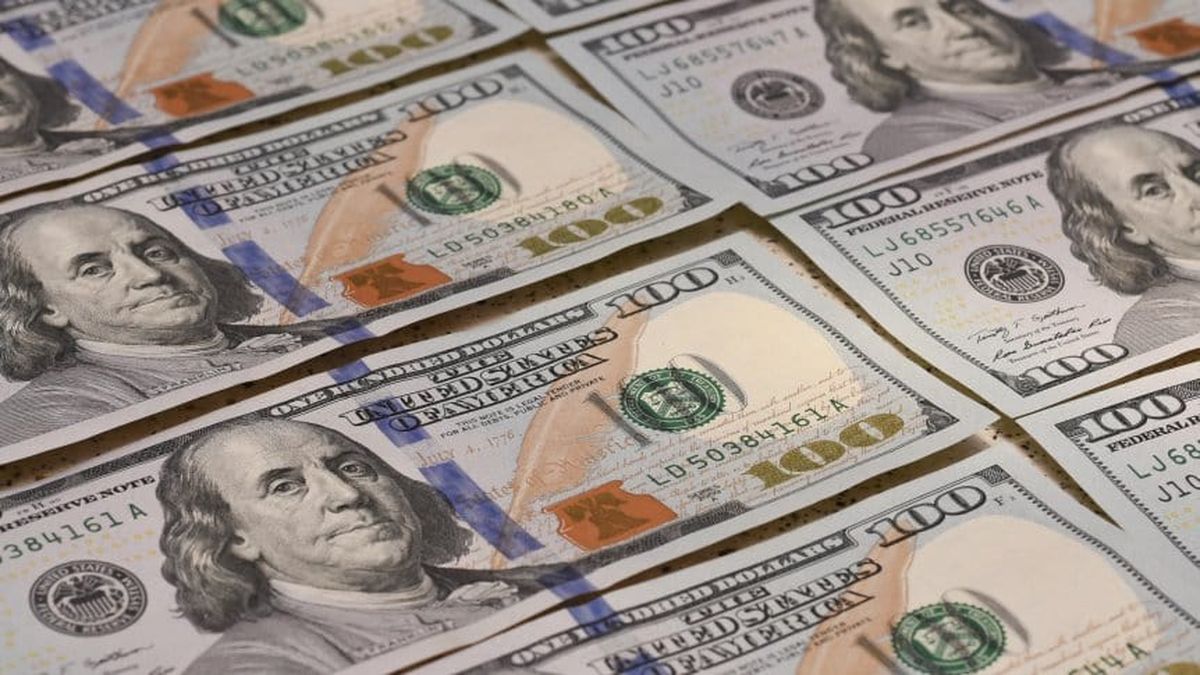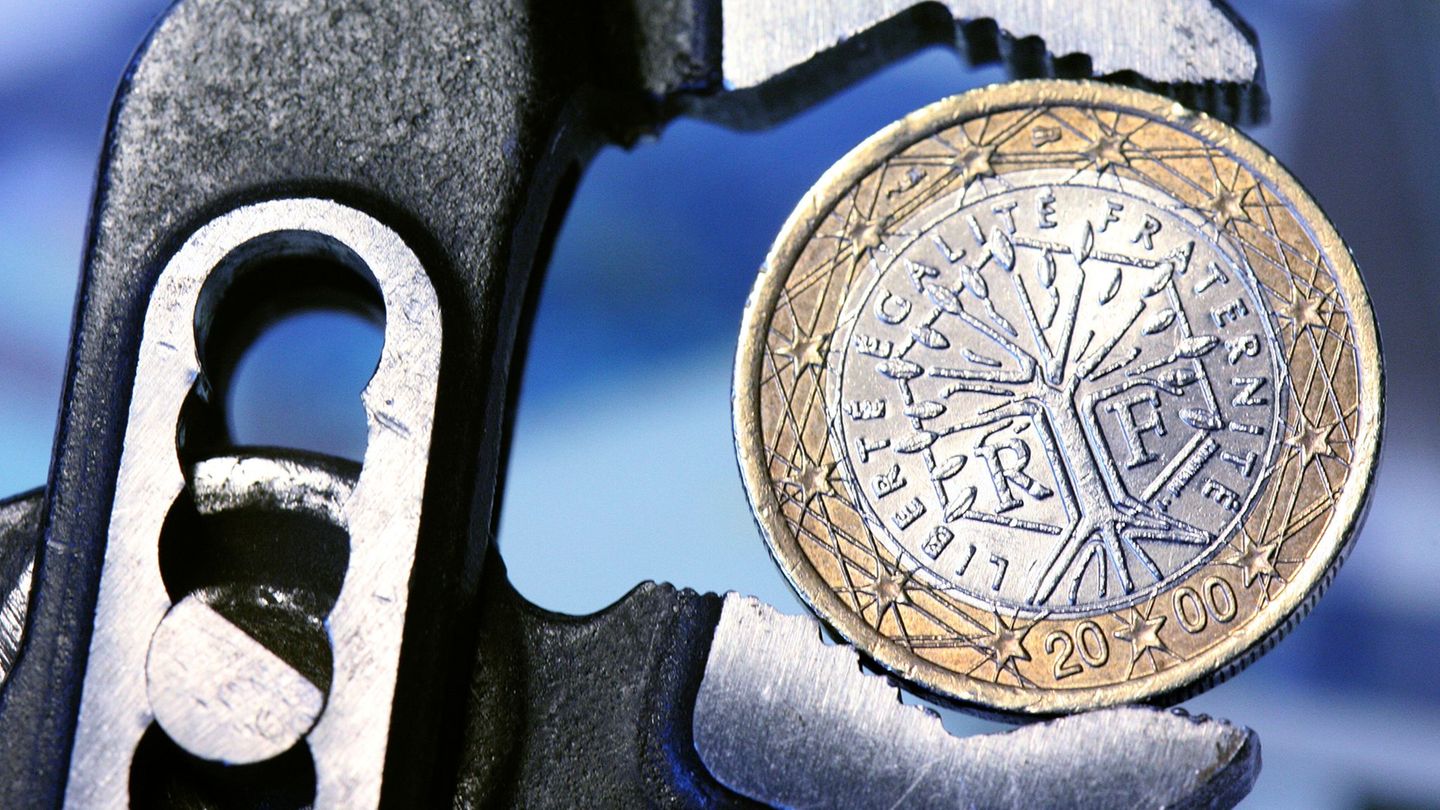For his part, MEP it fell 0.6% (- $ 1.29) to $ 202.27. Consequently, the spread with the official quotation was 99.4%.
“Growing concerns arouse the adverse dynamics of net reserves, even though something could be cushioned shortly if the currencies of the fine harvest of the field arrive in a few weeks. Hence the importance of the definitions from that front that reach the agreement with the IMF, since the liquid position is critical compared to the commitments of the coming months, this in the midst of a high ‘gap’ – still around ‘100% – that continues to generate a vicious circle “, highlighted the economist Gustavo Ber.
The country Today began technical negotiations with the International Monetary Fund (IMF), seeking to accelerate the possibility of an agreement and overcome exchange and financial pressures that affect the economy.
Argentine officials seek to gradually eliminate the differences with the IMF technicians, allowing the Government to send to Congress the multi-year economic program, announced by President Alberto Fernández.
Specialists estimated that the agreement with the IMF could be finalized before December 22 when a payment to the organization for about US $ 1,880 million expires. While an official source told Reuters that there is no stipulated date. “Not for now. It is supposed to be on the right track, but we will have to wait,” he said.
Gonzalo Gaviña, from Portfolio Personal Inversiones, stressed that “it will be key to see the fine print of the agreement. There is still not much information about it, but it is known that it will be important that it be accompanied by an economic plan that is short-term and allows a 2022 with better spirits “.
From Grupo SBS, they stressed that “the exchange rate plan will be one of the keys to the program. The high exchange rate gap limited the ability to take advantage of the favorable terms of trade in 2021. We believe that a program with the IMF will imply the abandonment of the exchange rate anchor as well as a higher real exchange rate, with an acceleration in the rate of crawling peg as the most likely policy in the short term. Likewise, the rebuilding of the reserve stock will be key. “
Regarding the economic program, an SBS analyst highlighted that “the exchange rate will be one of the main challenges for Argentina when it comes to setting a path to macroeconomic stabilization.”
“Despite very favorable terms of trade, with a high trade surplus (which was maintained in October), tensions persist, with an exchange rate gap motivated by high issuance. This causes few sources of supply of dollars and several of demand, which which, at the end of the heavy harvest, led to BCRA sales both in the MULC and in futures and via operations with bonds, giving rise to a negative trend in net reserves “, they added.
Central Bank buybacks
The Central Bank managed to buy back about US $ 5 million on Monday in the exchange market, after selling between Thursday and Friday.
“The adjustment strategy designed by the monetary authority remains unchanged and does not yet show signs of significant acceleration, even despite the statements made by the President of the Central Bank (on the rate of devaluation). environment of less activity but with a better balance between market forces, the Central interrupted the sequence of sales that began with the beginning of the month and ended the day with a meager balance in favor of its intervention“, highlighted the analyst Gustavo Ber.
The monetary authority had accumulated in the first three days of December a negative balance of more than $ 200 million. Let us remember that, in addition, in November it had sacrificed some US $ 890 million of its reserves.
Official dollar
The dollar today rose two cents this Monday to $ 106.65 -without taxes-, according to the average of the main banks in the financial system. In turn, the retail value of the dollar at Banco Nación remained at $ 106.25.
The saving dollar or solidarity dollar -which includes 30% of the COUNTRY tax, and a 35% on account of the Income Tax- it amounted to three cents to $ 175.97.
The wholesale dollar, for its part, rose 12 cents to $ 101.28, under the strict regulation of the BCRA, in which it operated with a mixed trend, alternating rises and falls, in a day with less volume (US $ 596,157 million) of operations than in the preceding one.
The US currency traded with a mixed trend, alternating rises and falls, in a day with a lower volume of operations than in the previous one. Prices had an upward trend in the first part of the day and downward in the second, always as a consequence of the interventions of the Central Bank.
The maximums were recorded in the middle of the morning, at $ 101.36, twenty cents above the previous end, when the authorized demand exercised certain dominance in the development of operations, driving a rise in the price from the initial levels registered at $ 101, 31. The appearance of the Central Bank with sales in the sector where banks and companies operate put an end to the rise in prices, which began a downward path that led them to hit minimums of $ 101.28 at the beginning of the last section of the session.
Source From: Ambito
David William is a talented author who has made a name for himself in the world of writing. He is a professional author who writes on a wide range of topics, from general interest to opinion news. David is currently working as a writer at 24 hours worlds where he brings his unique perspective and in-depth research to his articles, making them both informative and engaging.




